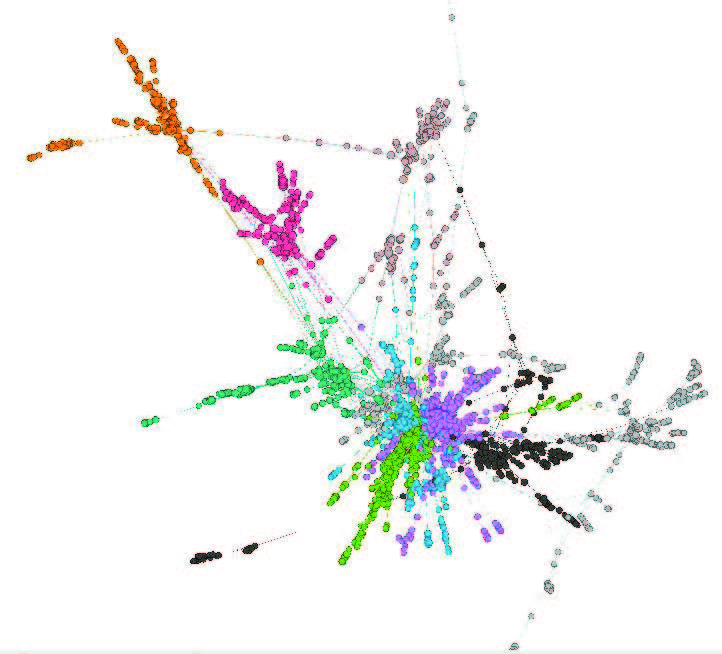
By nature and by training, scholars tend to be specialists, and this is as true in the academic study of religion as in other fields. Scholars focus on particular religious traditions, in particular geographical and cultural contexts, during particular time periods. And they study these particular religious phenomena using diverse methods, including but far from limited to: textual translation and exegesis, philosophical analysis and argumentation, ethnographic and anthropological observation, sociological data collection and analysis, psychological experimentation, and neuroscientific imaging and analysis. Given this specialization, scholars of religion are often only deeply familiar with a few small niches within the broad and extremely diverse academic study of religion as a whole. However, using modern computing power and the tools of data science, it’s possible to map an entire academic field. This paper provides a bibliometric analysis – i.e. the quantitative analysis of publications – of the academic study of religion, including the relatively recent explosion of publications in the scientific study of religion. Using co-authorship and citations networks, we were able to demonstrate something we already suspected: that there is little cross-pollination occurring between the more traditional humanities and social sciences branches of the study of religion and this newer scientific branch. Such field-mapping exercises are important not only for helping scholars of religion appreciate the breadth and diversity of research about religion, but they can also provide critical insights about where the field is growing and shrinking so that institutions – from religion departments to private funders – can plan accordingly.
Here’s a link to the full article; the abstract follows below:
Academic conferences are among the most energizing gatherings of scholars and scholarship. When the North American Association for the Study of Religion pivoted to an online format for their 2020 Annual Meeting, a broader audience was able to enjoy the sophisticated social analysis for which NAASR is known. In this issue, NAASR joins the Bulletin as a content-partner in publishing some of the research featured during the meeting. Wesley J. Wildman (Boston University) shares his bibliometric research of social scientific publications in the field. F. LeRon Schults (Boston University) highlights how computational modeling and simulations can be used to examine religious phenomena as well as forecast sociological dynamics. And Daniel D. Miller (Landmark College) posits a framework he calls “queer democracy” to help readers historicize, complicate, and confound the articulation of Christian nationalist politics. Together these contributions speak to currents in theory and method being explored in the North American field.
